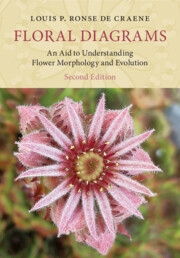Book contents
- Floral Diagrams
- Floral Diagrams
- Copyright page
- Dedication
- Contents
- Preface
- Acknowledgements
- Part I Introduction to Floral Diagrams
- Part II Floral Diagrams in the Major Clades of Flowering Plants
- 4 Systematic Significance of Floral Diagrams
- 5 Basal Angiosperms
- 6 Monocots
- 7 Early Diverging Eudicots
- 8 Basal Pentapetalae
- 9 Rosids
- 10 Caryophyllids
- 11 Asterids
- Part III Conclusions
- Glossary
- References
- Index
5 - Basal Angiosperms
The Ascent of Flowers
from Part II - Floral Diagrams in the Major Clades of Flowering Plants
Published online by Cambridge University Press: 11 March 2022
- Floral Diagrams
- Floral Diagrams
- Copyright page
- Dedication
- Contents
- Preface
- Acknowledgements
- Part I Introduction to Floral Diagrams
- Part II Floral Diagrams in the Major Clades of Flowering Plants
- 4 Systematic Significance of Floral Diagrams
- 5 Basal Angiosperms
- 6 Monocots
- 7 Early Diverging Eudicots
- 8 Basal Pentapetalae
- 9 Rosids
- 10 Caryophyllids
- 11 Asterids
- Part III Conclusions
- Glossary
- References
- Index
Summary
Floral diagrams are presented for fourteen families out of six orders of the basal groups of angiosperms. The floral diagrams of the basal angiosperms illustrate the early progression of flower diversification. Starting with the most basal angiosperms, different trends in flower evolution are shown through diagrams, illustrating the transition of spiral to whorled trimerous flowers, incipient transformations of floral organs and accessory structures, and the progressive fusion of organs. The major orders are presented with representatives of the most important families and their trends, including Laurales, Magnoliales and Piperales.
- Type
- Chapter
- Information
- Floral DiagramsAn Aid to Understanding Flower Morphology and Evolution, pp. 74 - 101Publisher: Cambridge University PressPrint publication year: 2022

